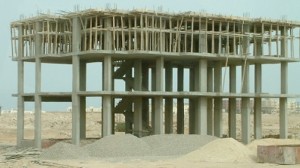
During a recent tour of Cairo, I surprised my Egyptian host and guide, Galal, by continually asking him to pull over so I could take photos of the real estate activity in and around Cairo. Galal, with a masters degree in Egyptology from the University of Cairo and a former curator at the Egyptian Museum, found it so hard to make a living, he returned to get his degree in hospitality and tourism (which says, I guess, that it’s much more profitable to show people antiquities than to study them).
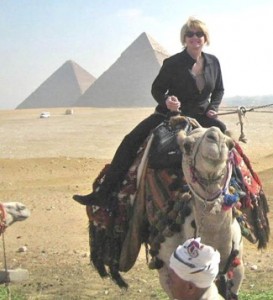
Like 90 percent of the population in Egypt, Galal is Muslim. He and his wife, Shahira, both speak three languages. She wears the “hijab” (head scarf), and he does not drink or smoke (except for the occasional trip to a Hooka bar), and sends his two daughters (surprisingly named Nancy and Nadine) to private school. Galal is an example of the many young, professional Egyptians who find it consistently difficult to secure well paying jobs—a major frustration that provided a catalyst for the Jan. 25, 2011 “revolution.”
Driving around Cairo’s Ring Road, a 110-kilometer freeway that loops the city, is to drive through an endless sea of red brick construction. These buildings are Cairo’s “informal” neighborhoods and are the dense, sprawling answer to Cairo’s population explosion and its lack of affordable housing. Recognizing the critical importance of the wide flowing, cit-central Nile River, and views of the 4,000-year-old Pyramids, the incredibly diverse personality of Cairo possesses an innate ability to retain its ancient customs and traditions, while trying to move agilely into the 21st century.
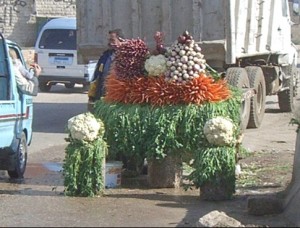
Greater Cairo has a population of more than 18 million people, yet the city continues to grow at an enormous pace. Being by far the largest of the three major employment areas within Egypt—a country with a surprisingly healthy economy, low national debt, and a well-educated employee pool—demographic issues, language, and transportation, tends to help Cairo retain its attractive workforce.
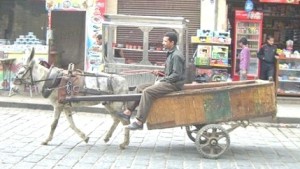 Donkey carts and sometimes oxen, overloaded with anciently grown crops, alfalfa, root vegetables, and housewares, share the streets with Peterbuilts, Mercedes, Fiats, and a few G-Wiz electric cars (although I use the term “sharing” loosely—traffic in Cairo can only be described as chaotic, especially since the revolution, with the police on strike). The noise level is high, but even so, it’s hard to miss the chanting of the Call to Prayer that is broadcast five times daily throughout the city.
Donkey carts and sometimes oxen, overloaded with anciently grown crops, alfalfa, root vegetables, and housewares, share the streets with Peterbuilts, Mercedes, Fiats, and a few G-Wiz electric cars (although I use the term “sharing” loosely—traffic in Cairo can only be described as chaotic, especially since the revolution, with the police on strike). The noise level is high, but even so, it’s hard to miss the chanting of the Call to Prayer that is broadcast five times daily throughout the city.
An Exxon/Mobile high-rise office building sits comfortably next to an open air market selling fresh (well, semi-fresh) meat and produce.
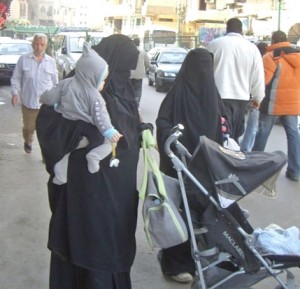 Each year, 250,000 new housing units are required to keep up with the population growth. To fill this need, a frenzy of real-estate development several years ago created a demand for ownership. Many purchased “investment” properties where, in a city with a severe housing shortage, an estimated 1 million apartments still remain empty. Because financing leverage is almost nonexistent and cash is king, foreclosure is rare. Owners require 50 percent down in cash, with the remainder paid when the building is finished.
Each year, 250,000 new housing units are required to keep up with the population growth. To fill this need, a frenzy of real-estate development several years ago created a demand for ownership. Many purchased “investment” properties where, in a city with a severe housing shortage, an estimated 1 million apartments still remain empty. Because financing leverage is almost nonexistent and cash is king, foreclosure is rare. Owners require 50 percent down in cash, with the remainder paid when the building is finished.
The philosophy is, “Build it, be patient, and they will come.” Construction quality, not hampered by OSHA, ADA, or other costly irritations, allowed for a more expedient completion time, which led to a serious overbuilding of apartment units.
Egyptians usually live in rented, vertically-built apartments; individual houses are rare due to high land costs. Even the affluent in the upscale neighborhoods are accustomed to the vertical “condominium” lifestyle. Occasionally, an extended family may buy an entire building and make the apartments available to its members, thereby creating their own family compound, only completing the structure as the family members marry and families expand. As a result, you see vast amounts of rebar atop the buildings waiting for the next construction phase to begin.
The result becomes these shoddily and hastily constructed red brick structures that go up, and up—without any form of cross bracing and for as many stories as the builders want add to accommodate the market.
 The buildings crowd right up to freeways, so close that motorists glance directly into the vacant buildings. Upon their rooftops, unfinished supporting columns and rebar extend skyward, waiting to be constructed until a floor or apartment is leased or, in the case of family investment units, when the children are ready to move in with their families. Along the upper floors, the bricks spell Allah.
The buildings crowd right up to freeways, so close that motorists glance directly into the vacant buildings. Upon their rooftops, unfinished supporting columns and rebar extend skyward, waiting to be constructed until a floor or apartment is leased or, in the case of family investment units, when the children are ready to move in with their families. Along the upper floors, the bricks spell Allah.
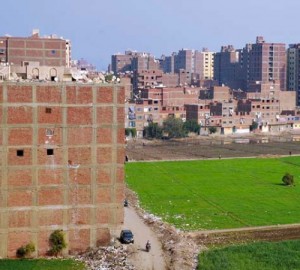 Now, contrast the informal red brick construction with the announcement by the Cleopatra Group’s flagship company, Ceramica Cleopatra, of the development of Cleopatra Mall. The mall is aimed at a growing demographic in Cairo and Egypt—young, educated, and affluent, with a modern outlook on life, while being fully committed to Egypt’s Islamic cultural heritage and standing in the world.
Now, contrast the informal red brick construction with the announcement by the Cleopatra Group’s flagship company, Ceramica Cleopatra, of the development of Cleopatra Mall. The mall is aimed at a growing demographic in Cairo and Egypt—young, educated, and affluent, with a modern outlook on life, while being fully committed to Egypt’s Islamic cultural heritage and standing in the world.
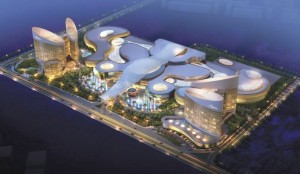
The mall will not only change the urban landscape of Cairo, it’s also symbolic of Cleopatra Group’s ambition to contribute to Egypt’s dynamic economy and supports Egyptian’s pride in their country. The project, designed by world renown retail architect Davide Padoa of Design International, is currently under construction and expected to open in late 2012.
Susan Arledge is president of Arledge Partners Real Estate. Contact her at [email protected].


